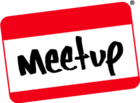This is a very good news if you’re using Ceph in production! Originally delivered as a proprietary dashboard included with Inktank Ceph Enterprise, Calamari has some really great visualization stuff for your cluster as well as the long term goal of being the all-in-wonder management system that can configure and analyze a Ceph cluster.
Calamari is composed in 2 elements:
Backend: the Calamari backend is written in Python 2.6+, using Saltstack, ZeroRPC, gevent, Django, django-rest-framework, graphite, (and a few others I may have forgotten) and instantiates a new REST API for integration with other systems.
A new french meetup MongoDB related will take place next Tuesday in Paris.
This will be a practical session to learn how to integrates and manage a MongoDB through Java. From shell and MongoDB drivers to make a website integration.
Thanks for the organization Duchess! To get more informations it’s here.

Today is the dotScale European conference. This is the first time I go to this event and it looks like very interesting.
Thanks to eNovance to give me the possibility to be there.
There is a lot of hackers here. I’ll make a short review about it in the next post…keep connected :-)
To get more information on the event: http://www.dotscale.eu/

I started to play with Ansible a little bit more than a week ago and I really enjoy it compared to Puppet. I still do not have all my reflex that I can have on Puppet, however what I can say is how easy it is to start making complicated things on Ansible!
I started to rewrite my Puppet manifests to Ansible playbooks and what I can say is it’s really fast and easy.

Regarding one of my latest post, talking about Fluentd, some of you asked me why I’ve chosen Fluentd instead of Logstash. First of all, I’ve looked at this blog post, which kindly resume the current situation. Looking at this and with feedback I got, I could establish this array:
<td style="padding: 2px 3px 2px 3px; vertical-align: bottom; background-color: #c9daf8; font-weight: bold; text-align: center;" data-sheets-value="[null,2,"Logstash"]"> Logstash </td> <td style="padding: 2px 3px 2px 3px; vertical-align: bottom; background-color: #c9daf8; font-weight: bold; text-align: center;" data-sheets-value="[null,2,"Fluentd"]"> Fluentd </td> <td style="padding: 2px 3px 2px 3px; vertical-align: bottom; text-align: center;" data-sheets-value="[null,2,"Flexibility/Interoperability"]"> Flexibility/Interoperability </td> <td style="padding: 2px 3px 2px 3px; vertical-align: bottom; text-align: center;" data-sheets-value="[null,2,"Simplicity/Robustness"]"> Simplicity/Robustness </td> <td style="padding: 2px 3px 2px 3px; vertical-align: bottom; text-align: center;" data-sheets-value="[null,2,"JRuby"]"> JRuby </td> <td style="padding: 2px 3px 2px 3px; vertical-align: bottom; text-align: center;" data-sheets-value="[null,2,"Cruby"]"> Cruby </td> <td style="padding: 2px 3px 2px 3px; vertical-align: bottom; background-color: #d9ead3; text-align: center;" data-sheets-value="[null,2,"More"]"> More </td> <td style="padding: 2px 3px 2px 3px; vertical-align: bottom; background-color: #f4cccc; text-align: center;" data-sheets-value="[null,2,"Fewer"]"> Fewer </td> <td style="padding: 2px 3px 2px 3px; vertical-align: bottom; background-color: #f4cccc; text-align: center;" data-sheets-value="[null,2,"Basics"]"> Basics </td> <td style="padding: 2px 3px 2px 3px; vertical-align: bottom; background-color: #d9ead3; text-align: center;" data-sheets-value="[null,2,"Scalables"]"> Scalables </td> <td style="padding: 2px 3px 2px 3px; vertical-align: bottom; background-color: #f4cccc; text-align: center;" data-sheets-value="[null,2,"Lot"]"> Lot </td> <td style="padding: 2px 3px 2px 3px; vertical-align: bottom; background-color: #d9ead3; text-align: center;" data-sheets-value="[null,2,"Lot more"]"> Lot more </td> <td style="padding: 2px 3px 2px 3px; vertical-align: bottom; background-color: #d9ead3; text-align: center;" data-sheets-value="[null,2,"Simple (drop a jar)"]"> Simple (drop a jar) </td> <td style="padding: 2px 3px 2px 3px; vertical-align: bottom; background-color: #fff2cc; text-align: center;" data-sheets-value="[null,2,"Can be complex (dependancies)"]"> Can be complex (dependencies) </td> <td style="padding: 2px 3px 2px 3px; vertical-align: bottom; background-color: #d9ead3; text-align: center;" data-sheets-value="[null,2,"Yes"]"> Yes </td> <td style="padding: 2px 3px 2px 3px; vertical-align: bottom; background-color: #d9ead3; text-align: center;" data-sheets-value="[null,2,"Yes"]"> Yes </td> <td style="padding: 2px 3px 2px 3px; vertical-align: bottom; background-color: #f4cccc; text-align: center;" data-sheets-value="[null,2,"Forward to 2 hosts"]"> Forward to 2 hosts </td> <td style="padding: 2px 3px 2px 3px; vertical-align: bottom; background-color: #d9ead3; text-align: center;" data-sheets-value="[null,2,"LB A/A or A/P"]"> LB A/A or A/P </td> <td style="padding: 2px 3px 2px 3px; vertical-align: bottom; background-color: #f4cccc; text-align: center;" data-sheets-value="[null,2,"Can loss messages"]"> Can loss messages </td> <td style="padding: 2px 3px 2px 3px; vertical-align: bottom; background-color: #d9ead3; text-align: center;" data-sheets-value="[null,2,"No message loss"]"> No message loss </td> Logstash and Fluentd are both powerful solutions, they both got pros and cons.

Next Wednesday, a meetup will take place in Paris talking about Elasticsearch. My previous post was talking about a log solution using Elasticsearch.
During that meetup, an overview of how Elasticsearch powerful real-time capabilities enrich Hadoop development. The session will showcase how to perform real-time searches on top and within Hadoop, Hive, Pig or Cascading jobs to get better answers, fast.
We’ll cover architectural topics such as index scalability, data locality and partitioning between the Hadoop cluster and the search index, using off and on-premise storages (HDFS, S3, local file-systems) and multi-tenancy.

Managing logs is not a complicated tasks with classical syslog systems (syslog-ng, rsyslog…). However, being able to search in them quickly when you have several gigabit of logs, with scalability, with a nice graphical interface etc…is not the same thing.
Hopefully today, tools that permit to do it very well exists, here are the list of tools that’s we’re going to use to achieve it:
Elasticsearch: Elasticsearch is a flexible and powerful open source, distributed, real-time search and analytics engine.
